Sustaining Burns In Work Place
A work place is more than just a building to go and do your job. It’s also the setting in which you encounter all sorts of hazards, from fires to cuts or burns. There are different work places that possess unique nature and surrounding, along with this is the existence of various hazards and imposed dangers to its workers and people within the place, one among these dangers is sustaining burns.
A burn injury is defined as a type of injury to the skin caused by an outer force which may include heat, radiation, chemicals and more. These injuries are common in the workplace and can range from superficial injuries such as scorching or singed hair on your arm that will heal without any medical attention needed to serious burns requiring immediate first-aid treatment before being transferred for further care. The severity of the burn depends on how deep it penetrates into your skin. Burns can be mild, moderate or severe depending on its degree.
Burns are classified as first-degree burns if only the outer layer of skin (epidermis) is damaged. Second-degree burns go through both layers and third-degree burns penetrate all three layers. Fourth degree burns involve damage to muscles and bones while fifth degree burns are complete destruction with no chance for recovery. 
Types of Burn inside a Workplace
The three most common types of burns that can happen at work are Electrical, Chemical and Thermal. Each type has its own characteristics in their effects to skin and over-all being of a worker and their treatment as well with different levels of severity from mild to severe. Here’s a breakdown for the more commonly known forms:
Electrical burns are a type of burn that occur when an electrical current traveling through your body meets resistance in the tissues. This is often due to loose-fitting clothing or jewelry near wire cords, and can cause serious injuries including third degree burns sometimes requiring skin grafts.
Chemical burns are injuries to the skin, eyes, mouth or internal organs caused by contact with a corrosive substance. They usually happen at home and in school due to negligence from cleaners or other chemicals found near these locations. These caustic substances may be called common household items like toilet bowl cleaner, if they get into someone’s eye since it can result in blindness after just one exposure. Chemical burns typically occur when people accidentally spill something harmful on themselves such as rubbing alcohol that comes into contact with their face while cleaning up around the house which will leave them forever disfigured without proper treatment fast enough.
Thermal burns are the most common type of burn. They happen as a result to exposure or contact with flames and hot surfaces like those found on stoves. These types of injuries can be fatal if not taken care of properly because they often lead to third-degree burns that cover more than 20% body surface area which would require skin graft surgery for recovery.
Though every industrial and workplace burns has different treatments and medications, these are the common measures to take on the spot when one self or fellow worker caught in a burn accident on its every degree:
- Move the person far away from the source of heat or chemical to stop the burning.
- For a first degree burn, consider immersing the burnt area or if possible the whole body of the victim in cold water. Provide the fire victim with some pain relievers and drinking water. Apply a burn cream or aloe vera on the areas that have sustained burns. To reduce swelling, elevate the body parts that have sustained burns.
- For a second-degree burn, you should follow the steps for a first-degree burn detailed above but avoid applying cold water on the affected areas.
- For a third degree burn, simply cover the affected areas with a dry, sterile, non-stick dressing and call for emergency medical assistance immediately. You should also lay the victim down and elevate the severely burnt areas to avoid further swelling. If necessary, cut away the clothing but don’t try to remove any clothing that may be stuck in a burn. Don’t perform any further first aid on the victim.
In numbers
Brief history and current situations of every occurence would be best understood in numbers. Here are the outstanding statistics of burn cases and experiences within the workspace according to NCBI:
- 5,000 burn injuries reported annually are work-related.
- Up until now, the number scales from 10% – 45% to the total inital burn injuries
- There are 180 000 deaths every year are caused by burns occurence on mostly third world countries.
What can the employer do?
There are many ways to prevent burn sustenance at the workplace. For example, some companies have water coolers near their ovens and fryers that employees can use in case they get splashed with boiling oil or hot grease during cooking. Other times, protective gloves will do a good job of keeping your hands safe while you’re working on an issue like these as well.
1. Follow to basic OSHA & NFPA guidelines
2. Establishing emergency measures and plans
3. Isolated smoking area
4. Imposing precautions and security
5. Organized surrounding (cleaning and proper inventory)
6. Equipments are ready
What if these measures are not followed?
If these measures are proven to be defied by a specific employer, then an employee is bound to file a personal injury claim against its employer. You may have suffered severe burns due to the negligence of employer, a negligent employer or other consumer product manufacturer, or a negligent third party at a construction site or other workplace. As result you are facing long and difficult recovery while also lacking legal rights which lead into options for your case as well as time in order to make any major decisions about what should happen next with your current situation. The consequences can be life-changing if not taken care of properly so it is important that these factors come first when making an informed decision on how best move forward.
Ryan Injury Lawyers has a reputation for representing individuals and small businesses against large insurance corporations, government agencies, and financial institutions. The attorneys at the firm have taken on cases including personal injury, wrongful death, catastrophic injury medical malpractice among others with success rates to back them up in representing their clients.
